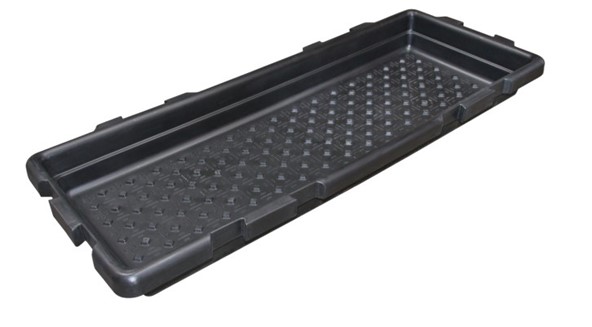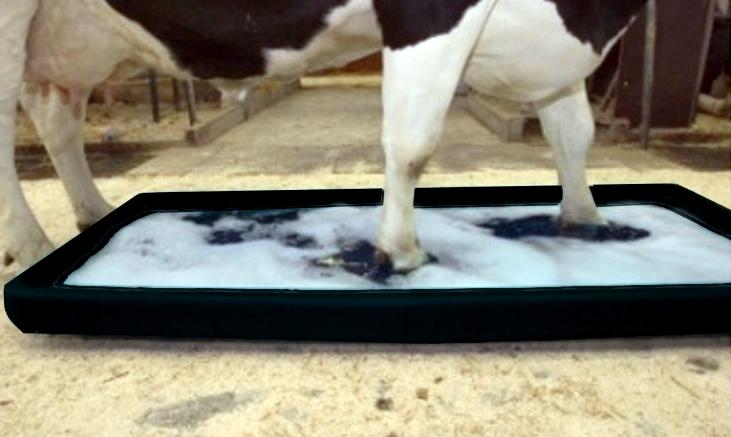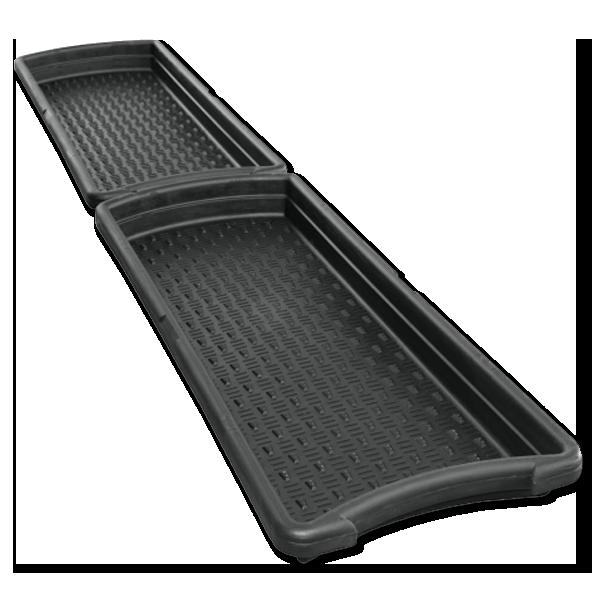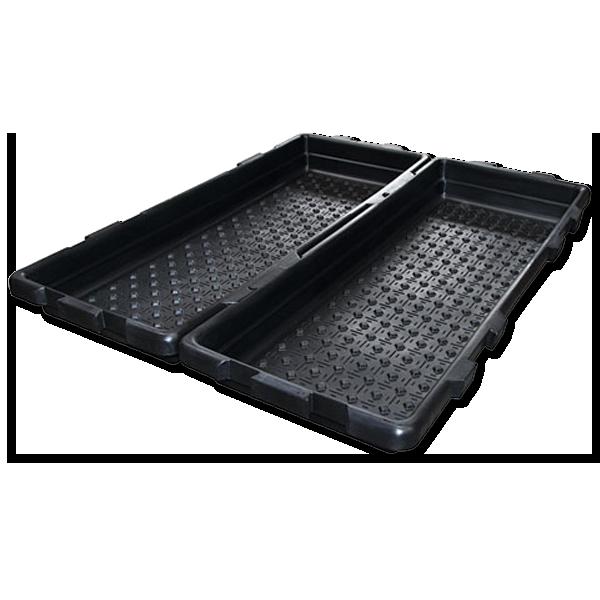Hoof bath

Cattle footbaths are used to control infectious diseases spreading in the environment.
The bath is used to harden the hoof horn and disinfect it, depending on the type of chemical used in the hoof bath.
HOW OFTEN TO USE THE BATH
 It is very important for dairy farmers to keep disease records to determine the frequency of bath use. Knowing the frequency of bath use and the infectious disease rate, it is possible to assess the effectiveness of the use program.
It is very important for dairy farmers to keep disease records to determine the frequency of bath use. Knowing the frequency of bath use and the infectious disease rate, it is possible to assess the effectiveness of the use program.
The dirtier the animals' lower parts, the higher the frequency of bath use. In dairy farms with excellent cow hygiene scores, a footbath may be used once a week. In other households, bath use may vary from 3 to 7 times a week.
RECOMMENDATION FOR USING A HOOF BATH
PROPORTION OF COWS WITH HYGIENE SCORE 3 AND 4 POINTS RECOMMENDATION FOR THE USE OF A HOOF BATHS
| Less than 25% | Of necessity |
| 25 - 50% | 2 days/week |
| 51 - 75% | 5 days/week |
| More than 75% | 7 days/week |
Assessment of contamination of cattle hooves
Score 1 : Clean, little or no contamination with manure.
Score 2 : Slightly dirty, lower part of limb slightly spattered with manure.
Score 3: Moderately dirty, clearly defined manure plaques are visible on the lower part of the limb, rising up the limb.
Score 4: Very dirty, with abundant crusts of manure visible on the lower part of the limb, rising up the limb
TYPES OF HOOF DISEASES
- Hoof dermatitis,
- Interclaw dermatitis
- Footrot
CORRECT USE OF A HOOF BATHS
Hoof treatment in the bath is an effective way to prevent and treat cattle diseases if 3 conditions are met:
The bathtub design is correct
Bath connection
Connection with short sides ensures a higher level of hygiene:


ADVANTAGES OF THE SUPER KOMBI BATH
- The location of the bath is correct
- Bathroom work done correctly
- The bath serves for the initial cleaning of the hooves, washing away dirt and remaining manure from them.
- Disinfection bath stays clean longer, allows you to use the disinfectant solution in it for a long time
- Lightweight and flexible thanks to the use of ultra-strong and wear-resistant polyethylene
- Resistant to the highest mechanical loads and chemicals
- Suitable for use with all types of hoof cleaning and disinfection solutions
- The bottom of the bathtub with a special profile ensures stability of the animals and optimal expansion of the hooves
- Thanks to the serrated joints on the long sides, the baths can be docked together
- Capacity is 200 liters; Dimensions are indicated on the product
- Length x width x height; 205 x 81 x 17 cm
Read together with it:
- Spare pacifierSpare nipple for bucket. Spare nipple for aluminum tank. Spare nipple for 3 and 4 liter bottles. Silicone, rubber, rubber. Spare teat in agriculture: a key element in animal feeding Agriculture plays an important role in ensuring food security and meeting the population's food needs. One of the key ...
- Pump for artificial ventilation of the lungsFor pumping out mucus. To restore blood flow during calving with complications. Ventilator pump: an innovative solution for agriculture Agriculture , as an important sector of the economy of many countries, requires constant improvement and the introduction of new technologies to improve living cond...
- Drencher for feeding calves with a rigid probe1. Volume 4 liters. 2. Bottle with a three-stage valve. 3. Handle. 4. Screw-on handle. 5. Wide base for stability. Drencher for feeding calves with a rigid probe: an effective tool for caring for young animals To successfully breed and care for young animals, especially calves, it is necessary to pr...
- Milk bottle1. Comes with a pacifier. 2.For milk feeding, infusion therapy and administration of drugs/electrolytes to calves. 3. Volume 2 and 3 liters. 4. Bottles with a handle and a tension nipple. Milk Bottle in Agriculture: History, Applications and Benefits The milk bottle is an important element in agricu...
- Dosing syringe, hose attachmentDosing syringe and hose attachment: key tools for modern agriculture Agriculture is one of the most important sectors of the world economy, ensuring food security and meeting the population's food needs. Modern technology plays an important role in increasing production efficiency, and one of the ke...
- Dosing syringe, bottle attachmentWith plastic basket for 100ml bottles. Possibility of precise dose adjustment. Simple and quick bottle replacement procedure. Dosing syringe with bottle attachment: an innovative solution for precise and convenient dosing of medications In the modern world, medical technology is constantly evolving,...
- Rubber rings for castrationCastration is an important procedure in livestock management, and one of the modern methods is the use of rubber rings. This innovative technique provides farmers with a more efficient and less invasive way to manage meat production and quality. Let's look at the features and benefits of rubber ring...

